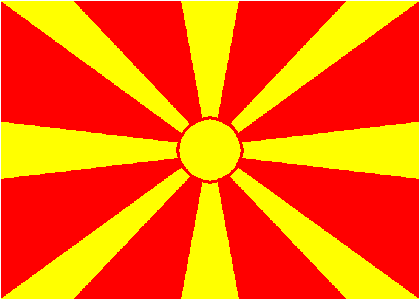
December 21, 2007
A huge explosion that devastated a swath of Siberia a century ago was caused by an asteroid that was much smaller than had previously been believed, according to new research. The blast produced an enormous fireball over the Tunguska region of northwestern Russia in June 1908 (see map). The so-called Tunguska event leveled trees up to 10 miles (16 kilometers) away.
New supercomputer models of the event show that the devastation may have been the result of a surprisingly small asteroid that never hit the ground.
Because smaller asteroids approach Earth's orbit more often than larger ones, the discovery could also mean that Earth is at increased risk of asteroid impacts.
"I'm not sure it puts it into a whole new class of risk," said study author Mark Boslough, a physicist at Sandia National Nuclear Security Administration laboratory in Albuquerque, New Mexico.
"But there's so much uncertainty in terms of knowing if there's one million or ten million of these things out there of a given size in Earth-crossing orbits."
Asteroid the Size of the White House
The Tunguska explosion had previously been estimated at 10 to 20 megatons, but Boslough suggests it was three to five megatons—still hundreds of times as powerful as the atomic bomb dropped on Hiroshima in 1945.
The incoming asteroid, moving at some 40 to 60 times the speed of sound, had roughly the same mass as a solid rock the size of the White House, the new study found.
This mass is what helped produce such widespread destruction from a relatively small package, Boslough explained.
As the asteroid streaked toward Earth's surface, growing resistance from the atmosphere compressed the rocky object until its kinetic energy was converted to heat, causing it to explode into vapor with tremendous violence.
"Unlike a nuclear bomb, which doesn't have a lot of mass, this has a lot of mass which carries all that explosive energy downward toward the surface," Boslough said.
In November a team of Italian scientists arrived at a different theory, after they found what they believe is a crater formed by the impact of a fragment of the exploding celestial object.
Earth a Target
Extraterrestrial objects of various sizes regularly enter Earth's atmosphere.
"[U.S.] Department of Defense satellites detect these things blowing up in the atmosphere all the time, but they are very small compared to Tunguska," Boslough said.
William Hartmann, an astronomer at the Planetary Science Institute in Tucson, Arizona, agreed.
"On a common night if you wait an hour you'll see a meteor or two. Those are [tiny] fragments," he said.
Tunguska-scale events are thought to occur only once every several centuries, but most of them likely take place over oceans or unpopulated areas, he said.
"The data on objects of White House-size are pretty lousy, so it is very crude to estimate how often they hit," said Hartmann, who is not affiliated with Boslough's research.
"We have the empirical evidence that they don't hit populated areas every 50 or 100 years, and that doesn't change."
However, such events may be more common than scientists know, if Boslough's study is correct, he added.
"If [the new models] are right [that] small objects can cause explosions of that size, it might suggest that these Tunguska events are a little more frequent than people thought."

